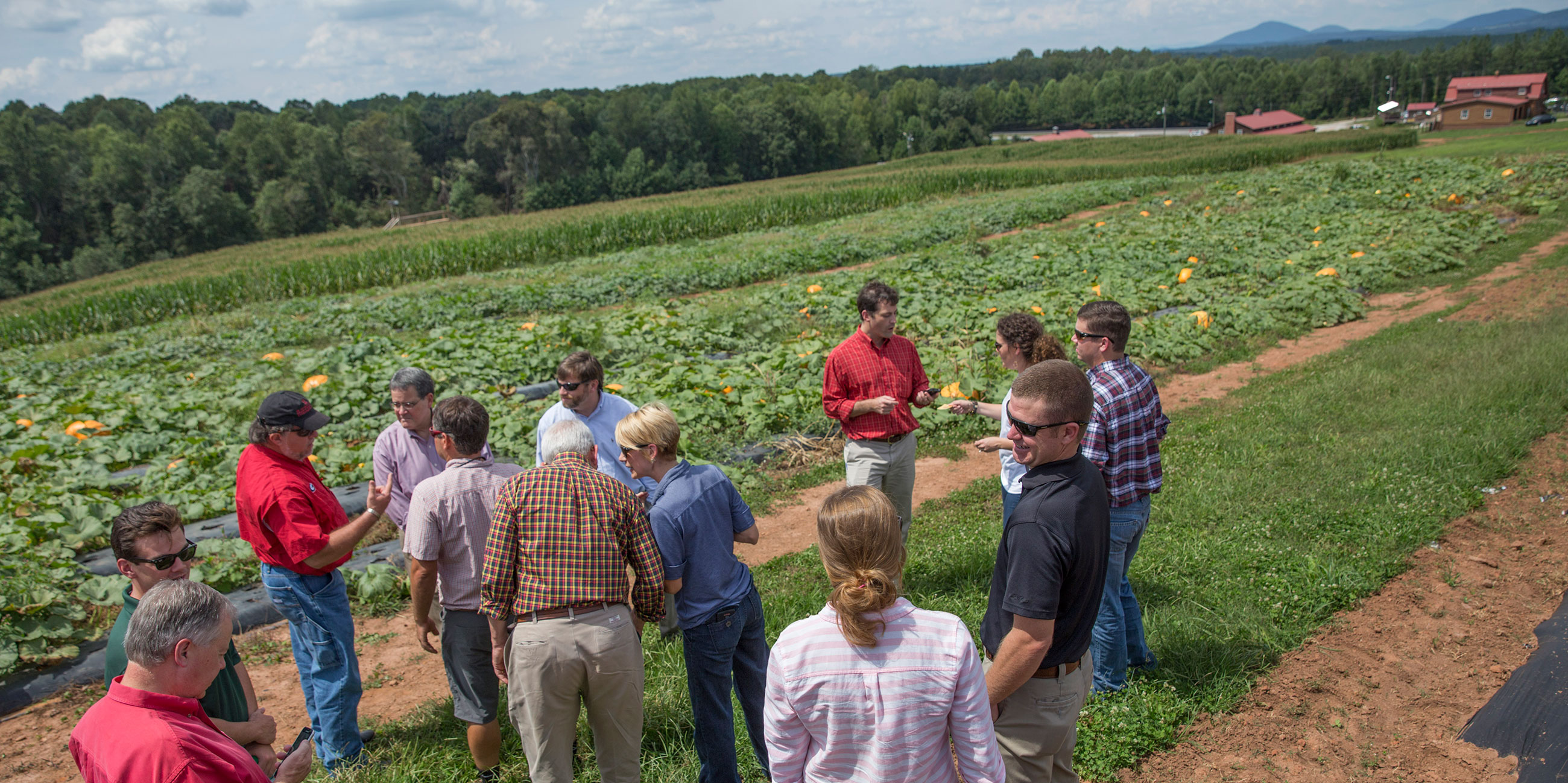From vineyards to vegetable patches to state-of-the-art food processing and food safety operations, agriculture in northeast Georgia is made up of a large and diverse set of enterprises.
University of Georgia President Jere W. Morehead took time to learn more about the farms, factories and laboratories that contribute to the region and the state’s largest industry Wednesday during the president’s annual farm tour.
“Candidly, there’s nothing more important to the University of Georgia than its linkage with the agricultural industry,” Morehead said during one stop on the tour. “This tour gives the university a chance to showcase what the university does for the agricultural industry and how important that industry is, not only to the state today but to the future of the state.”
This is the third year Morehead has joined Georgia’s Commissioner of Agriculture Gary Black and members of the Georgia General Assembly to visit local farms and food-based businesses around the state. In 2013, the delegation visited farms in northwest Georgia, and in 2014, they visited farms in southwest Georgia. This year the focus was on northeast Georgia.
“This tour is just another example of our efforts to help connect the dots, and we feel that we did that today with some great dialogue between the businesses visited and the members of our delegation,” Black said.
Sen. John Wilkinson, chairman of Georgia state Senate’s Agriculture and Consumer Affairs Committee; Rep. Terry England, chairman of Georgia state House’s Appropriations Committee; and J. Scott Angle, dean and director of the UGA College of Agricultural and Environmental Sciences, accompanied Morehead and Black on the tour.
With agritourism, poultry and food manufacturing all playing key roles in northeast Georgia’s agricultural economy, the tour covered six points of interest – from Tiger, in the north Georgia mountains, to Flowery Branch, south of Gainesville.
Starting at Tiger Mountain Vineyards, the delegation learned about one of the fastest growing sectors of Georgia’s agricultural economy and how UGA is contributing to its success through research into grape production, food safety and production enhancements and economic development services.
While in Tiger, they visited Hillside Orchards, a top producer of specialty jams, jellies and ciders. They then traveled to Jaemor Farms in Alto where many of Hillside’s products are sold.
Drew Echols, manager at Jaemor Farms, explained how horticultural research at UGA has helped strengthen their vegetable and fruit production and helped the farm to grow into an agritourism destination that attracts visitors from all over the country.
Morehead also visited the headquarters of the Georgia Poultry Laboratory Network in Gainesville, which is one of several state-of-the-art facilities built to protect the safety of Georgia’s most valuable commodity – poultry.
He also visited King’s Hawaiian Bakery, which built a plant in Georgia in 2011 that now produces half of the nation’s supply of King’s Hawaiian Bread. To round out the tour, the delegation visited Sonstegard Foods, a third-generation business that provides eggs and a variety of egg products throughout the United States.
At each stop, farm and plant managers shared ways in which UGA has contributed to their success and ways that the university could help in the future.
“Each year our farm tour proves to be an excellent opportunity to showcase the impact UGA has on the lives of everyday Georgians,” Angle said. “It’s also a great chance to learn about the issues and the opportunities facing Georgia’s farmers and how we can help.”


